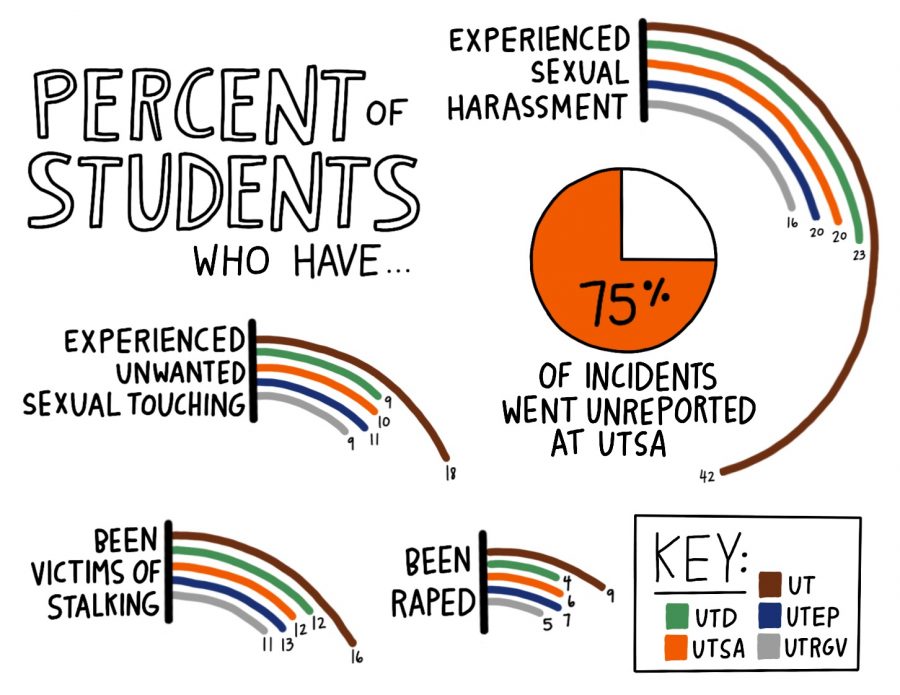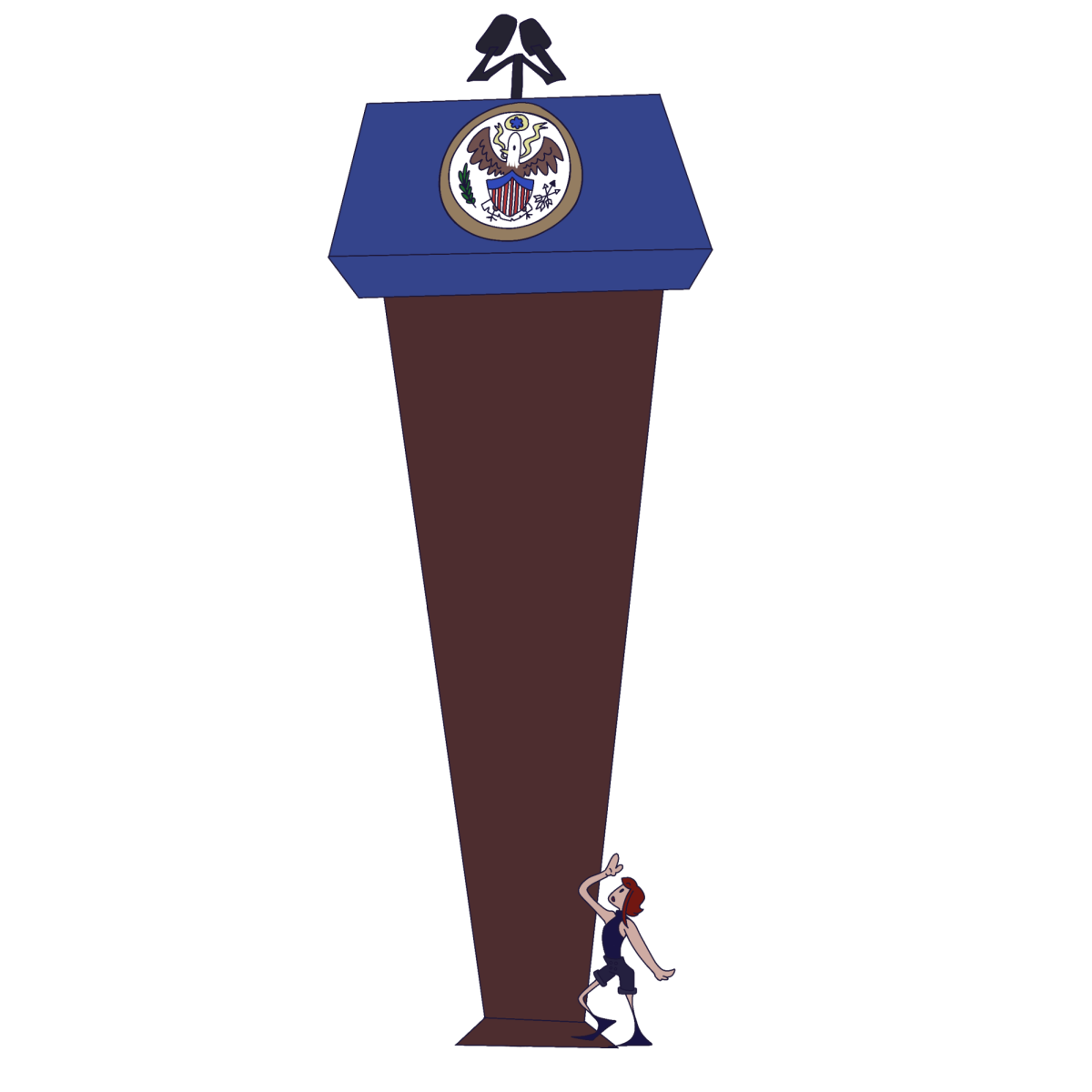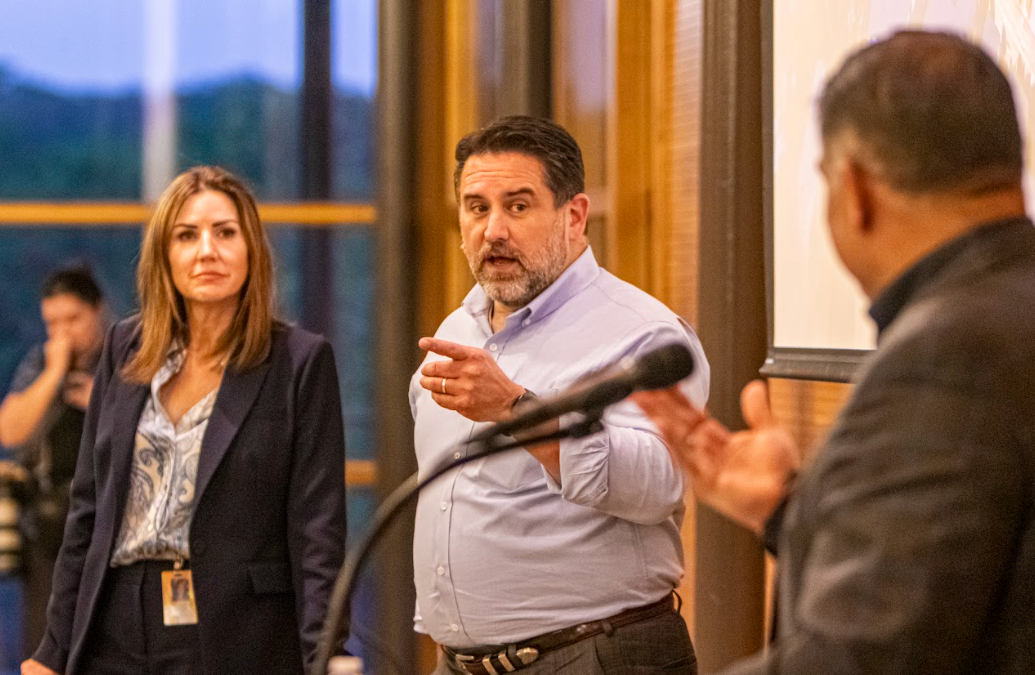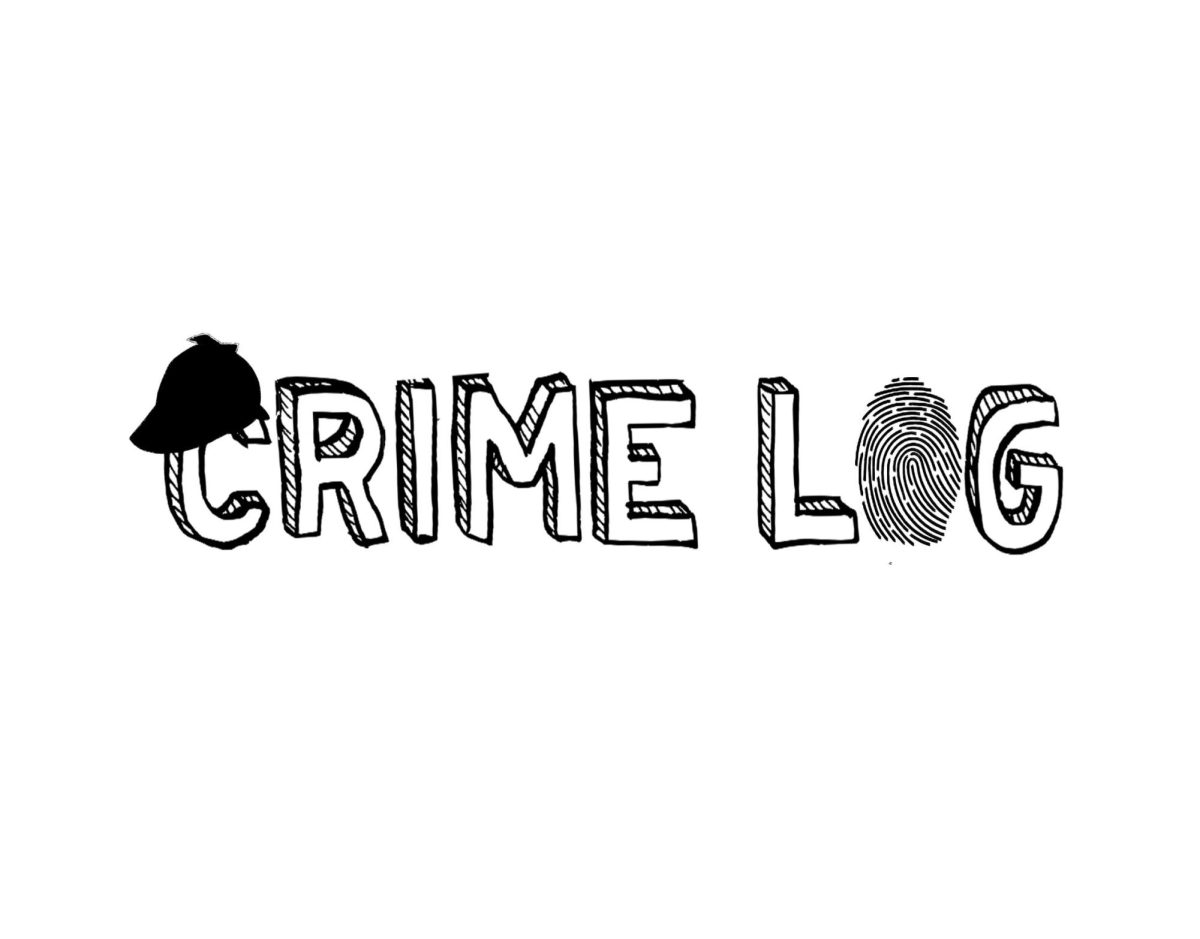CLASE survey identifies most common sexual harassment, assault perpetrators on campus
The Faculty Senate subcommittee on Preventing Sexual Violence will present a report concerning on-campus sexual violence at the May 3 Faculty Senate meeting. A preliminary report was presented by the subcommittee on Apr. 12 that outlined findings in the Cultivating Learning and Safe Environments (CLASE) survey.
The full report is supplemented by results from the UTSA CLASE survey, released Mar. 24, 2017, in which 3,385 UTSA students participated, a 13.8 percent response rate. According to a UTSA Today article from Mar. 24, 2017, students were asked to self-report their experiences in five areas. Thirteen out of 14 UT System institutions participated in the CLASE survey.
“There’s an issue. Period,” concluded Dr. Crystal Kalinec-Craig, assistant professor in the interdisciplinary learning and teaching department and member of the faculty senate subcommittee on Preventing Sexual Violence.
Twenty percent of UTSA students who responded to the survey said they have experienced sexual harassment or victimization by other students; 12 percent have been victims of stalking; 11 percent said they experienced sexist gender harassment by faculty or staff members; 10 percent have been victims of unwanted sexual touching; six percent said they had been raped and four percent were victims of attempted rape.
The CLASE survey also found that the most common perpetrators of faculty/staff sexual harassment were faculty (62 percent) and student employees (29 percent); according to the victims 49 percent of unwanted sexual contact victims and 76 percent of unwanted sexual contact perpetrators had used alcohol or drugs at the time of victimization; most incidents of dating/domestic abuse and violence and unwanted sexual contact occurred off-campus; victims reported that 93 percent of physical violence and 88 percent of unwanted sexual contact incidents occurred off-campus; 37 percent of unwanted sexual contact perpetrators were students at UTSA; 57 percent of unwanted sexual contact victims had a close relationship with the perpetrator and 33 percent were acquaintances.
Referring to the students who have experienced gender harassment by faculty or staff members, Kalinec-Craig said, “For us, 11 percent is 11 percent too much. It should be none. If there is anything above zero, that should be raising alarms.”
The Faculty Senate was approached by Provost C. Mauli Agrawal to convene a small task force to examine the CLASE report. Kalinec-Craig says the subcommittee will focus on faculty involvement in preventing sexual violence on campus.
“We need to make sure this is a sustainable effort. Long past whenever (affected) students graduate,” Kalinec-Craig said. “If we just look at it as a quick, band-aid fix of it, if and when (sexual violence) happens, that’s not thinking of it in a long-term, holistic perspective.”
Dr. Richard J. Harris, professor of sociology who researches sexual harassment and assault in military environments, says that environments that have potentially sexist climates, like university campuses, are more likely to experience sexual violence incidents.
“If there’s a general sexist climate, that increases the likelihood that individuals will act out and behave in inappropriate ways,” Harris said. “If sexism is prevalent, people who could potentially be perpetrators are more likely to act out.
“We have more capacity to control that context than we do to control individuals.”
Harris believes that the subcommittee’s recommendations will lead to changing these environments.
“I see attitudinal change, the culture change, as something that emerges from effective implementation of policy,” Harris said. “In the short term, we can shape that environment much more quickly and readily than we can shape attitudes.”
Though the recommendations have not yet been approved by the Faculty Senate’s executive committee, Harris says there will likely be harder sanctions on perpetrators of sexual violence on campus.
“If people report problematic behavior and it’s acted upon, and people know it’s acted upon, that’s influencing that environment,” Harris said. “If there’s no consequence ever visible, people don’t believe (there will be consequences).”









